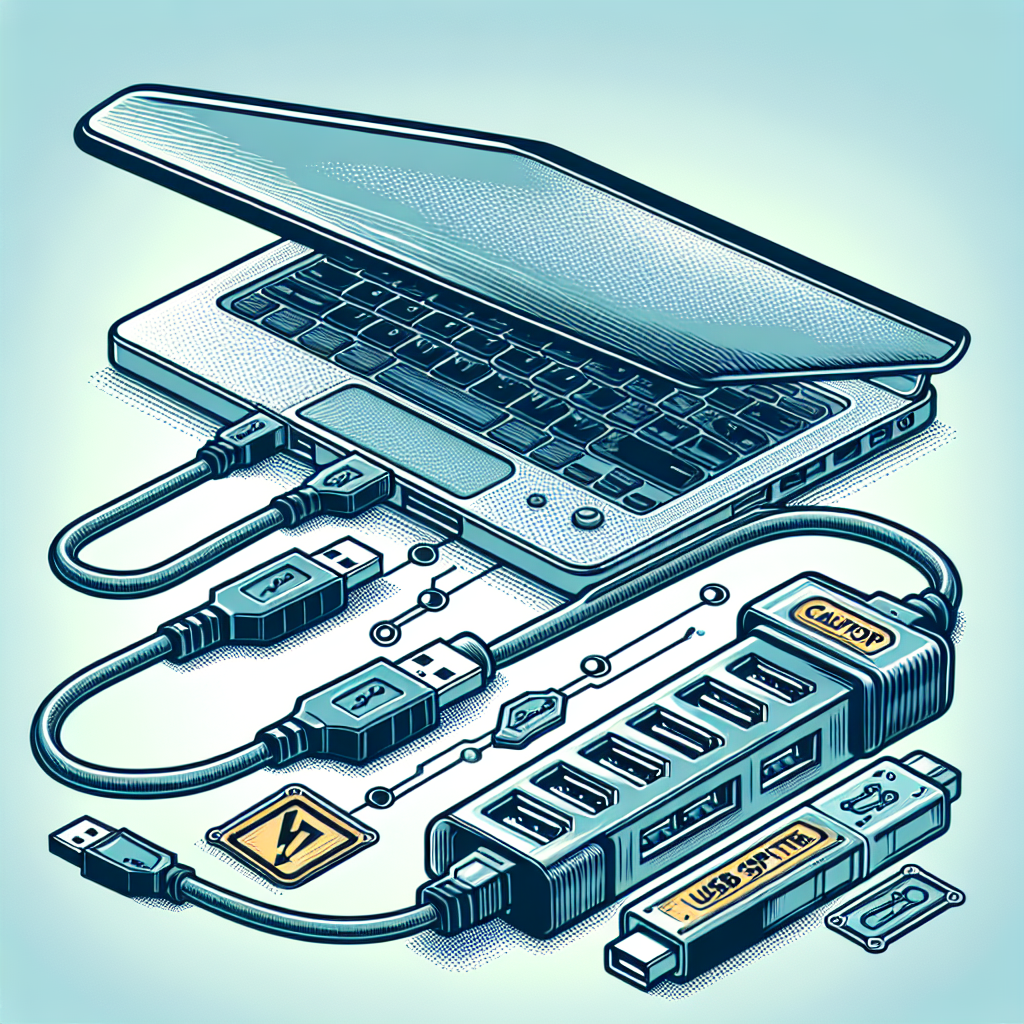Introduction
In today’s digital age, USB splitters have become an essential accessory for many computer users. These devices allow you to connect multiple USB devices to a single port, which is particularly useful for laptops and PCs that have a limited number of USB ports. However, a common concern among users is whether using a USB splitter can damage their devices. This article will delve into the functionality of USB splitters, their potential risks, and best practices for safe usage.
Understanding USB Splitters
A USB splitter is a simple device that takes one USB connection from your computer and divides it into multiple ports. Depending on the type and design of the splitter, it can allow you to connect two, four, or even more devices through a single USB outlet. Below is a breakdown of the functionality and types of USB splitters:
| Type of USB Splitter | Description |
|---|---|
| Passive Splitter | Distributes the power and data signals from one USB port to multiple outputs but does not amplify the signal. |
| Active Splitter | Includes a power source to boost signals, allowing for longer cable lengths and more reliable connections. |
| USB Hub | A more advanced device that provides multiple USB ports along with additional functions such as power charging. |
Common Concerns About Damage
When it comes to using USB splitters, several concerns arise regarding the potential damage to laptops and PCs:
- Overloading Power Supply: USB ports are designed to deliver a specific amount of power. Connecting too many devices to a splitter may exceed the power limit and potentially damage the USB port.
- Data Loss: A poorly designed splitter can result in data corruption or loss when multiple devices are trying to communicate simultaneously.
- Heat Generation: An overloaded USB splitter can generate excess heat, which poses a risk to both the splitter and the connected devices.
- Compatibility Issues: Not all splitters support all devices, especially when it comes to high-power devices like external hard drives.
How USB Splitters Work
To determine if a USB splitter can damage your laptop or PC, it’s essential to understand how these devices operate:
Power Distribution
USB ports can deliver a maximum of up to 2.5W to 4.5W depending on the USB version. A splitter divides this power output among the connected devices. In passive splitters, if too many devices draw power simultaneously, it can lead to overloading and damage.
Data Transfer
USB splitters also share data transfer capabilities. If multiple devices require heavy data rates (like cameras or printers), it can cause bottlenecks that may result in data loss or slow speeds.
Best Practices for Using USB Splitters
To prevent damaging your laptop or PC while using a USB splitter, consider the following best practices:
- Choose Quality Devices: Invest in high-quality, reputable USB splitters that come with safety features like overcurrent protection.
- Monitor Power Needs: Make sure not to exceed the power limits of your USB port. It’s wise to avoid connecting high-power devices to the same splitter.
- Limit Active Connections: Avoid using all ports simultaneously if possible, focusing on one or two devices at a time.
- Use Powered USB Hubs: If you need to connect several devices, consider using a powered USB hub that has its own power supply to ensure adequate power distribution.
Signs of Potential Damage
Being aware of signs that your USB splitter may be causing issues can save you from future damage:
- Frequent Disconnects: If connected devices frequently disconnect, it could indicate overload or a faulty splitter.
- Failed Devices: If multiple devices fail while connected through a USB splitter, it may suggest power distribution issues.
- Overheating: Extreme heat from the splitter is a clear sign that it is being overloaded.
Conclusion
In conclusion, while a USB splitter can be highly convenient, it is crucial to use it responsibly. By understanding the operational mechanics of these devices and following best practices for their use, you can avoid potential risks and damage to your laptop or PC. Be proactive about monitoring power needs, choosing quality devices, and recognizing the signs of trouble to enjoy a safe and efficient computing experience.

